Bodyboards sind neben Surfboards das wohl beliebteste Board zum Wellenreiten. Sie sind sehr anfängerfreundlich und man macht schnell Fortschritte. Ideal für alle, die im nächsten Strandurlaub eine neue Sportart ausprobieren wollen.
So funktioniert Bodyboarden richtig:
BeyondSurfing zeigt Ihnen die beliebtesten Bodyboards in 2025 im Vergleich und erklärt Ihnen, auf welche Merkmale Sie beim Kauf achten müssen.
Inhalt
In Eile? Unser Bodyboard Favorit:
- Gut für Anfänger
- Niedriger Preis
- Hochwertiges Material
Bodyboard Checkliste
- Wozu? Beim Bodyboarden gleitet man auf einem Brett liegend über das Wasser.
- Für wen geeignet? Bodyboarden ist leicht zu lernen und eignet sich für Kinder und Erwachsene gleichermaßen.
- Welche Merkmale? Unterschiede in Größe, Form und Material wirken sich signifikant auf das Surfverhalten aus.
Ebenfalls interessant: Die beliebtesten Skimboards 2025
Das sind die Top 3 Bodyboards in 2025
Bestes Bodyboard für Kinder
1. COSTWAY Bodyboard
Vorteile
- Gut für Anfänger
- Niedriger Preis
- Hochwertiges Material
Nachteile
- Kein High Performance Board
- Kein Stringer
- Schlechte Leash
Zusammenfassung
Das COSTWAY Bodyboard ist ein Einsteiger Bodyboard. Die verwendeten Materialien sind weniger hochwertig, als bei Bodyboards in einer höheren Preisklasse.
Die pflegeleichte XPE-Oberfläche garantiert eine gute Stoßfestigkeit und Haltbarkeit. ZUsätzlich es das BOard durch den HDPE-Unterboden besser manovrierbar.
Das Board ist mit einer Leash ausgestattet. Da diese aber nur aus einer Schnur besteht, sollte sie gegen eine hochwertigere Leash ausgetauscht werden.
Produktdetails
Größe: 104 x 51 x 6 cm | Tail: Crescent Tail | Deck: HDPE, XPE
Kundenbewertungen
Die Kunden lobten die gute Verarbeitung des Bodyboards und waren allgemein sehr zufrieden. Viele Kunden gaben an, dass ihre Kinder viel Spaß mit dem Bodyboard haben.
Rund 11% stehen dem Produkt neutral gegenüber, während nur 9% das Produkt als mangelhaft und unzureichend bewerten.
Kunden beschwerten sich darüber, dass das Bodyboard nicht wie angegeben für Personen bis 85kg geeignet ist.
FAQ
Bestes kostengünstiges Bodyboard
2. Schildkröt Schwimmbrett Bodyboard M
Vorteile
- Gut für Anfänger
- Niedriger Preis
- Inkl. Leash
- EPS-Schaumstoffkern
Nachteile
- Kein High Performance Board
- Kein Stringer
Zusammenfassung
Das Schildkröt Bodyboard eignet sich am besten für Anfänger, die ein günstiges Bodyboard zum Einstieg suchen. Leash und Leashplug sind bereits enthalten und müssen nicht erst extra angebracht werden.
Der Kern besteht aus EPS. Das Material ist zwar günstiger als Polyester, besitzt aber trotzdem sehr gute Auftrieb- und Flexeigenschaften. Ein guter Kompromiss für Menschen, die nicht gleich viel Geld ausgeben möchten.
Der EPS Kern ist außerdem sehr robust. Das macht das Bodyboard sehr langlebig. Kleinere Schläge, Stöße und Aufprälle können damit problemlos weggesteckt werden.
Die hier verwendeten Materialien sind weniger hochwertig, als bei Bodyboards in höheren Preisklassen. Trotzdem ist die Qualität und Verarbeitung für Anfänger mehr als ausreichend. Wer wirklich ambitioniert ist, der sollte allerdings zu einem hochwertigeren Bodyboard greifen.
Produktdetails
Größe: 69 x 45 cm | Tail: Crescent Tail | Deck: Nylon
Kundenbewertungen
Die Kunden waren mit diesem Bodyboard zufrieden. Es wurde zum einen als Spielzeug für Kinder gelobt. Zum anderen wurde oft positiv hervorgehoben, dass es fürs Bodyboarden gut funktioniert und Spaß macht.
Rund 12% stehen dem Produkt neutral gegenüber, während nur 13% das Produkt als mangelhaft und unzureichend bewerten.
Ein Kunde beschwerte sich über die schlechte Verarbeitung des Bodyboards. Er hatte zwei Boards erworben und nach einmaligem Gebrauch war eines gebrochen und bei dem anderen riss der Stoffbezug auf.
FAQ
Bestes hochwertiges Bodyboard
3. Sniper Cluster PE Bodyboard
Vorteile
- Hohe Stabilität
- Zwei Stringer
- Hochwertige Materialien
- Erhältlich in verschiedenen Größen
- Für Fortgeschrittene
- Kern aus Polyethylene
Nachteile
- Hoher Preis
- Keine Leash
Zusammenfassung
Das Sniper Bodyboard ist das hochwertigste Bodyboard in der Auswahl. Durch seine Materialien ist es sehr robust und eignet sich sehr gut für Fortgeschrittene.
Der Kern besteht aus Polyethylene und das Board besitzt zwei Stringer. Diese sorgen für eine gute Stabilität des Bodyboards und garantieren den nötigen Flex.
Auf der HD Unterseite befinden sich zwei Channels. Das Tail ist ein Crescent Tail. Somit hat das Bodyboard einen guten Halt in der Welle und lässt sich leicht kontrollieren.
Einziger Nachteil ist der hohe Preis. Vergleicht man das Bodyboard mit anderen hochwertigen Bodyboards, ist der Preis aber durchaus normal und mehr als gerechtfertigt.
Produktdetails
Größe: 36 inch | Tail: Crescent Tail | Deck: N/A
Kundenbewertungen
FAQ
Highlight
Bonus: Churchill Makapuu
Der Klassiker unter den Bodyboard Flossen
Zusammenfassung
Die Churchill Makapuu sind der Klassiker unter den Bodyboard Flossen. Und da man beim Bodyboarden immer Flossen verwenden sollte, dürfen sie in der Auswahl nicht fehlen.
Die Flossen bestehen aus Gummi und erinnern in ihrer Form an die Schwanzflosse eines Delfins. Auf der Unterseite befindet sich ein Loch, durch das das Wasser abfließen kann.
Kundenbewertungen
Die Kunden lobten die gute Verarbeitung und das angenehme Tragegefühl der Flossen. Außerdem sagten Kunden, dass man sich damit gut im Wasser fortbewegen kann.
Rund 11% stehen dem Produkt neutral gegenüber, während nur 6% das Produkt als mangelhaft und unzureichend bewerten.
Kunden beschwerten sich darüber, dass die Flossen nicht die richtige Größe für ihre Füße haben, was zu Problemen bei der Benutzung führt.
Passend zum Thema:
Bestseller: Die beliebtesten Bodyboards
(**Letzte Aktualisierung am 30.06.2025.)
Bodyboards kaufen:
So treffen Sie die richtige Entscheidung
Das Angebot auf dem Bodyboard Markt ist riesig und die vielen verschiedenen Formen und Materialien können auf den ersten Blick schnell verwirrend wirken.
Doch es wird besser:
BeyondSurfing zeigt Ihnen alle wichtigen Informationen, um Ihnen bei der Auswahl des richtigen Bodyboards zu helfen.
Was viele Menschen nicht wissen:
Passt das Bodyboard nicht zu den Eigenschaften seines Besitzers, wird aus Spaß am Sport schnell Frustration.
Beim Bodyboard Kauf sollten Sie unbedingt auf folgende Merkmale und Eigenschaften achten:
- Größe
- Core
- Stringer
- Deck
- Slick
- Shape
Bodyboard Größe
Welche Bodyboard Größe ist die Richtige?
Die Größe spielt eine wichtige Rolle bei der Auswahl des richtigen Bodyboards. Besonders wichtig ist die Länge des Bodyboards. Wie lang es sein muss hängt von der Körpergröße und dem Gewicht des Bodyboarders ab.
| Bodyboard Größe (in inch) | Körpergröße (in cm) | Körpergewicht (in kg) |
|---|---|---|
| 33 | 122 und kleiner | 18-30 |
| 36-38 | 122-152 | 30-38 |
| 39-40 | 160-168 | 38-59 |
| 41-41.5 | 170-175 | 59-77 |
| 42 | 175-183 | 65-83 |
| 43 | 185-190 | 77-95 |
| 44 | 188-193 | 81-113 |
| 45 | 190 und größer | 88 und mehr |
| Hinweis: Die Tabelle dient als Richtwert zur Orientierung. Anfänger können sich z.B. ruhig ein etwas größeres Board zulegen. Durch das höhere Volumen ist es leichter damit Wellen zu bekommen. Das Board darf nur nicht so groß sein, dass es beim Paddeln mit den Füßen hinderlich ist. | ||
Warum ist die Größe wichtig?
- Ein zu großes Bodyboard: Ist das Bodyboard zu groß, schlägt man mit seinen Beinen auf das Bodyboard, wenn man sich im Wasser fortbewegt. Das führt zu Problemen beim Rauspaddeln und Anpaddeln der Welle. Außerdem ist das Bodyboard wesentlich schwerer zu kontrollieren.
- Ein zu kleines Bodyboard: Ein zu kleines Bodyboard hat zu wenig Auftrieb im Verhältnis zum Gewicht des Riders. Das erschwert das Vorwärtskommen im Wasser, Wellen lassen sich nur um einiges schwerer anpaddeln.
Welche Rolle spielen große oder kleine Wellen bei der Auswahl?
- Große Wellen: Wer große Wellen mit viel Kraft bodyboarden möchte, dem ist ein kleines Brett zu empfehlen. So liegt mehr vom Körper im Wasser und das Bodyboard lässt sich besser kontrollieren.
- Kleine Wellen: Für kleine Wellen ist ein größeres Bodyboard besser geeignet. Durch den gesteigerten Auftrieb wird es leichter Wellen zu kriegen und das Bodyboard ist stabiler im Wasser.
Merke: Die richtige Größe spielt eine entscheidende Rolle im Wasser. Atchen Sie darauf Ihr Bodyboard weder zu Groß noch zu Klein zu kaufen.
Bodyboard Core
Welcher Bodyboard Core ist der Beste?
Der Core ist der Kern des Bodyboards. Er bildet die Basis und um ihn liegen die anderen Teile des Bodyboard. Das Material des Kerns hat eine große Auswirkung darauf, wie sich das Board im Wasser verhält.
Für den Kern spielt die Wassertemperatur, die Art der Wellen und die Körpergröße eine Rolle. Die meisten Cores bestehen entweder aus:
- Polypropylene (kurz PP) oder
- Polyethylene (kurz PE)
- Mix aus PP und PE
1. Polypropylene Kern
- Leicht
- Schnell
- Robust
- Langlebig
- Behält die Form bei
- Steif
- Weniger Flex
- Am besten für warmes Wasser geeignet
Ein PP Kern ist sehr steif. Das Bodyboard verändert seine Form also weniger in der Welle, man spricht hier auch von wenig Flex.
In kaltem Wasser (unter 21°C) verliert PP an Flex. Dadurch wird das Board extrem steif und die Rides können unangenehm bis unkontrollierbar werden.
Das Material ist außerdem leicht und robust. Deshalb sind Bodyboard aus diesem Material schnell auf der Welle und geben einem ein Extra an Geschwindigkeit nach Turns.
Fazit: Lassen Sie sich nicht von den vielen Vorteilen von PP täuschen! Trotz seiner Langlebigkeit sind PP-Kerne für europäische Gewässer nur bedingt geeignet.
2. Polyethylene Kern
- Viel Flex
- Gut für kaltes Wasser
- Mehr Kontrolle
- Schwerer
- Weniger langlebig
Ein PE Kern zeichnet sich durch seinen hohen Flex aus. Das Bodyboard wird durch diesen Kern biegbar und passt sich besser an die Form der Welle an. Dadurch hat man mehr Kontrolle über das Board und es lässt sich besser manövrieren.
Gegen diese Art von Kern spricht das vergleichsweise hohe Gewicht und die Tatsache, dass es weniger robust und dadurch auch weniger langlebig ist.
Fazit: PE-Kerne performen besser im kalten Wasser und damit besser für die meisten europäischen Surfregionen geeignet.
3. Core-Mix Bauweisen
Neben dem klassischen Kern – der entweder aus PE oder PP besteht – gibt es noch weitere Bauweisen. Diese bestehen zu meist aus einem Core-Mix und unterscheiden sich vor allem im Herstellungsverfahren:
Dual Cores (3D Cores)
Hierbei handelt es sich um einen Kern der aus zwei Teilen besteht. Statt nur eines der herkömmlichen Materialien zu verwenden werden hier beide genutzt.
Das beste aus beiden Welten:
Durch die Mischung aus PE und PP ist das Board robust und liefert eine gute Performance. Die beiden Materialien werden in Sandwichbauweise übereinander gelegt. Durch das PE wird das Bodyboard flexibel und das PP im Kern sorgt dafür, dass das Bodyboard stabil ist und einem lange erhalten bleibt.
Low Density PP Cores
Hierbei handelt es sich um einen Kern aus PP mit einer niedrigeren Dichte. Das Bodyboard ist dadurch weniger steif und lässt sich somit gut in kalten und warmen Wasser verwenden.
EPS Core
Einen EPS (Expanded Polystyrene Core) findet man vor allem bei Kinder- und Einsteiger Bodyboards. Das Material ist günstiger, hat aber trotzdem einen akzeptablen Auftrieb und Flex.
Bodyboard Stringer
Sind Bodyboard Stringer notwendig?
In der Mitte des Kerns befindet sich der Stringer. Dieser besteht aus einer oder mehreren Röhren und ist damit so etwas wie die Wirbelsäule des Bodyboards. Meist aus Carbon oder Fiberglas gefertigt verstärkt der Stringer das Bodyboard.
Wofür ist der Stringer wichtig?
Ein Bodyboard mit Stringer ist für ungebrochene grüne Wellen sehr zu empfehlen.
Was genau macht ein Bodyboard Stringer?
- Das paddeln auf dem Boardboard gewinnt dadurch an Stabilität.dDe Performance des Bretts wird dadurch deutlich besser.
- Das Brett verformt sich weniger leicht.Das Board behält besser seine Flex beim surfen auf der Welle.
Wie viele Stringer gibt es in einem Bodyboard?
Normalerweise sitzt ein Stringer in der Mitte des Kerns, aber es gibt auch Bodyboard mit zwei oder mehr Stringern. Mehr Stringer machen das Bodyboard noch stabiler. Der Nachteil ist, dass es dadurch aber auch schwerer und träger auf der Welle wird.
Der Trend geht zu drei Stringer:
Einen langen in der Mitte und zwei kürzere seitlich davon. Dadurch bleibt der hintere Teil des Bodyboard besonder stabil, während der Flex ab den Ellenbogen höher ist als in Richtung Tail.
Bodyboard Deck (Oberseite)
Welches Bodyboard Deck ist das Beste?
Das Deck ist die Oberseite des Bodyboards, also der Teil auf dem man liegt. Das Deck ist normalerweise aus PE, demselben Material das auch im Kern verwendet wird.
Gut zu wissen:
PE ist weich, sodass über einen kurzen Zeitraum Dellen auf der Oberseite des Bodyboards entstehen können. Doch keine Sorge, das ist ganz normal. Manche Bodyboarder mögen es sogar, wenn z.B eine Kuhle für die Ellenbogen entsteht.
Die Alternative zu PE-Decks:
Crosslink Decks! Die Dichte solcher Decks ist niedriger, die Oberfläche nimmt weniger Wasser auf, ist dafür aber steifer. Man braucht außerdem mehr Wax, um für einen guten Halt auf dem Bodyboard zu sorgen. Crosslink Decks findet man meistens auf günstigeren Bodyboards.
Bodyboard Slick (Unterseite)
Welches Bodyboard Slick ist das Beste?
Als Slick bezeichnet man die Unterseite des Boards, also der Teil, der direkten Kontakt zum Wasser hat. Dabei werden vor allem zwei Materialien benutzt:
Surlyn Slicks
Surlyn Slicks werden am häufigsten verwendet. Mit diesen Slicks reagiert das Bodyboard gut. Das Material ist Flexibel nimmt aber schnell seine ursprüngliche Form wieder an, nachdem es gebogen wurde.
Surlyn macht das Board außerdem schneller, ist langlebig und robust. Damit beugt es Schäden auf der Unterseite des Boards vor.
HDPE Slicks
HDPE wird meistens für Einsteigerboards verwendet, da es günstiger als Surlyn ist. Die Optik ist zwar ähnlich, aber das Material weniger robust.
HDPE Unterseiten eignen sich daher eher für leichte Menschen, da diese weniger Druck auf das Board ausüben und das Material so weniger belastet wird.
Fazit: Wer nicht viel investieren möchte und sich erstmal auf dem Bodyboard ausprobieren will, für den sind HDPE Slicks die richtige Wahl. Wer mehr als nur einen Urlaub lang Spaß haben möchten greift lieber zu Surlyn Slicks.
Bodyboard Shape
Welcher Bodyboard Shape ist der Beste?
Als Shape wird die Form des Bodyboards bezeichnet. Hierbei spielen vier Faktoren eine wichtige Rolle:
- Tail
- Nose
- Rails
- Channels und Contours
1. Das Tail
Als Tail bezeichnet man das hintere Ende des Bodyboards und hat Einfluss auf die Stabilität, Schnelligkeit und Manövrierbarkeit des Bodyboards.
Die beiden geläufigsten Formen sind das Crescent Tail und das Bat Tail.
Crescent Tail
Das Crescent Tail ist das am weitesten verbreitete Bodyboard Tail:
- U förmig
- Am häufigsten genutzt
- Gut für Kinder und Anfänger
- Gut für große Wellen und Tubes
- Sorgt für eine gute Manövrierbarkeit
Durch die U-Form ist ein großer Teil des Körpers im Wasser, was für mehr Kontrolle auf der Welle sorgt.
Das Beste:
Durch dieses Tail lässt sich das Board nicht nur besser kontrollieren, die Form macht es auch leichter seine Hüften richtig auf dem Bodyboard zu platzieren.
Auch in großen Wellen und Tubes findet das Crescent Tail Verwendung. Durch seine Form hat es einen guten Halt in der Welle und es lässt sich gut Druck auf die Rail aufbauen.
Ist ein Crescent Tail anfängerfreundlich?
Ja! Das Crescent Tail ist anfängerfreundlich und deshalb auch für Einsteiger und Kinder geeignet. Es ist gut manövrierbar und bietet Komfort beim liegen auf dem Board.
Bat Tail
Das Bat Tail ähnelt in seiner Form den Flügeln einer Fledermaus und eignet sich vor allem für Bodyboarder mit höherem Körpergewicht und kleine Wellen:
- Fledermausform
- Gut für schwerere Bodyboarder
- Gut für kleine Wellen
- Sorgt für Geschwindigkeit
- Sorgt für weniger Drag
Die Hinterseite des Bodyboards liegt durch das Tail höher im Wasser und der Strömungswiderstand sinkt. Dadurch wird das Board schneller und lässt sich besser manövrieren.
Aber Achtung:
In großen Wellen lässt sich das Board weniger gut kontrollieren und wird instabiler!
2. Die Nose
Die Nose ist der vordere Teil des Bodyboards und beeinflusst die Manövrierbarkeit des Bodyboards.
Eine breite Nose:
- Macht das Board stabiler.
- Sorgt dafür, dass das Board besser gleitet.
- Ist 11-13 inches breit (ca. 28-33cm).
Eine schmale Nose:
- Ist manövrierfähiger.
- Senkt den Strömungswiderstand.
- Sorgt für einen loseren Ride.
Was sind Nose Bulbs?
Außerdem kann das Board an der Nose mit Nose Bulbs ausgestattet sein. Das sind Wölbungen an den Ecken der Nose, die dafür sorgen, dass man sich besser an seinem Board festhalten kann.
Nose Bulbs sind ein gutes Feature, sowohl für Anfänger als auch für Fortgeschrittene. Das Bodyboard lässt sich dadurch besser greifen und kontrollieren. Auch harte Drops lassen sich damit besser meistern.
3. Die Rails
Die Rails sind die beiden Außenkanten des Bodyboards. Sie laufen spitz zu und bestehen aus zwei Teilen. Dem unteren Teil “der Rail” und dem oberen Teil “dem Chime”.
Das Verhältnis der beiden Teile entscheidet, wie stabil das Bodyboard in der Welle ist und wie gut man die Rail von der Welle lösen kann, um ein Manöver zu auszuführen.
Die geläufigsten Rail Verhältnisse sind 60/40 (Rail/Chime) und 50/50.
60/40 Rails
- 60% der Rail sind im Wasser und 40% über Wasser.
- Sorgen für mehr Kontrolle.
- Gut für große Wellen.
- Sind am geläufigsten.
50/50 Rails
- 50% der Rail sind im Wasser und 50% über Wasser.
- Sorgen für mehr Geschwindigkeit.
- Machen das Bodyboard manövrierfähiger.
4. Channels und Contours
Hierbei handelt es sich um zwei Extras. Man findet Channels und Contours zwar nicht auf jedem Bodyboard, aber sie können sehr nützlich sein, wenn man mehr Kontrolle oder Stabilität möchte.
Channels
Channels sind zwei flache Rinnen, die auf der Unterseite des Bodyboards verlaufen. In ihnen verwirbelt sich Wasser, das Board wird dadurch zwar langsamer, lässt sich dafür aber besser kontrollieren. Channels funktionieren ähnlich wie Finnen bei einem Surfboard.
Eine Sonderform ist das Concave:
Ein großer Channel mit einer Wölbung in der Mitte, der die Geschwindigkeit des Boards erhöht. Dadurch wird das Board schneller und lässt sich noch besser kontrollieren.
Contours
Mit Contours sind Einwölbungen auf der Oberseite des Bodyboards gemeint. Dadurch steigt der Komfort beim liegen auf dem Brett. Zusätzlich helfen sie das Bodyboard besser zu kontrollieren und die Ellenbogen richtig zu positionieren.
Außerdem sind Contours nützlich, wenn man sich gut an seinem Bodyboard festhalten muss, zum Beispiel beim duckdiven oder harten Drops.
Bekannte Marken und Hersteller
Es gibt viele Bodyboard Hersteller und Marken. Zu den wichtigsten und bekanntesten Marken gehören: Osprey, Pride, Morey, NMD, Gul, Waimea.
Bodyboard-Tests bei Stiftung Warentest und Öko Test
Leider liegen zum jetzigen Zeitpunkt keine Test von Stiftung Warentest oder Öko Test vor.
Riding Styles beim Bodyboarding
Schon gewusst? Bodyboarden ist nicht nur im liegen möglich! Es gibt drei unterschiedliche Riding Styles. Welcher am besten zu einem passt, muss jeder selbst herausfinden:
Prone
Prone bezeichnet die klassische Art auf dem Bodyboard zu liegen. Der Bauch liegt auf der Oberseite des Bodyboards, die vordere Hand greift die Ecke des Bodyboard und die hintere Hand greift seitlich.
Drop Knee
Beim Drop Knee Bodyboarding wird in einer halb-knienden Position auf dem Bodyboard gesurft. Der vordere Fuß steht auf der Vorderseite des Decks, während das hintere Knie auf dem hinteren Ende steht.
Das ganze kommt surfen auf einem Surfboard schon ziemlich nah, ist aber nicht ganz einfach. Dadurch dass das Bodyboard keine Finnen wie beim Surfboard hat, werden Tricks wie 360° Drehungen möglich.
Stand Up
Wie der Name schon vermuten lässt, steht man hier komplett auf dem Bodyboard. Keines der Knie berührt dauerhaft das Brett. Dieser Style ist am unpopulärsten, schwer zu meistern und erinnert an richtiges Wellenreiten.
Es gilt: Grundsätzlich lassen sich mit (fast) jedem Bodyboards alle drei Riding-Styles surfen.
Bodyboard Zubehör und Pflege:
Das gehört zum Bodyboarden
Bodyboard Flossen
Ohne Boddyboard Flossen geht es nicht?!
Bodyboard Flossen (auch Fins genannt) sind notwendig, um die beste Bodyboarding Erfahrung zu haben.
Wieso Flossen?
Hier die wichtigsten Gründe, warum Bodyboard Flossen unverzichtbar sind:- Man kann mit sich mit ihnen im Wasser schneller bewegen.
- Man kann leichter durch Wellen tauchen.
- Wellen lassen sich einfacher anpaddeln.
- Helfen dabei die Rails zu kontrollieren.
- Schützen vor scharfen Steinen.
Tauchflossen vs. Bodyboard Flossen
Für die ersten Bodyboard Versuche können auch Tauchflossen benutzt werden. Da diese aber länger sind und nicht dafür ausgelegt sind schnell Geschwindigkeit aufzubauen, sollten Sie nur für die ersten 1-2 Bodyboarden-Versuche genutzt werden.
Bodyboard Flossen sind kürzer und ein Beinschlag kann schneller ausgeführt werden als mit Tauchflossen. Sie unterscheiden sich außerdem in ihrer Symmetrie. Tauchflossen sind an der Spitze meistens symmetrisch, während Bodyboard Flossen asymmetrisch sind.
Wie müssen Flossen sitzen?
Zu kleine oder große Flossen können das Bodyboarden zur Qual machen. Sind die folgenden Kriterien erfüllt, können Sie sich sicher sein, dass die Flosse richtig sitzen.
- Die Flossen sitzen fest, aber nicht zu eng.
- Kein unangenehmer Druck auf Zehen, Fuß oder Ferse.
- Keine Krämpfe im Fuß während dem Bodyboarden.
- Die Lasche an der Ferse sitzt fest und schmerzlos.
- Die Flossen wackeln nicht und sind nicht lose.
Merke: Fins sollten bequem sitzen und keine Schmerzen verursachen! Erwarten Sie aber nicht die Bequemlichkeit eines gut sitzenden Turnschuhs.
Sie haben nach oder während dem Bodyboarden Krämpfe und/oder Schmerzen in den Füßen?
Höchstwahrscheinlich liegt das an zu engen Flossen! Legen sie sich deshalb lieber ein neues paar zu, anstatt sich bei jeder Session zu quälen.
Wer das erste mal mit Flossen ins Wasser geht, der wird merken, dass das gar nicht so einfach geht. Es sei denn man befolgt diese einfachen Schritte:
- Vorwärts ins Wasser gehen
- Wenn das Wasser knöcheltief ist rückwärts weiter gehen
- Sobald das Wasser hüfttief ist anfangen auf dem Bodyboard zu paddeln
Flossen Extras, die Ihr Leben erleichtern
1. Fin Socks
Wenn es im Wasser zu kalt ist, oder die Flossen doch nicht ganz passen, sind Fin Socks die richtige Lösung!- Halten warm
- Schützen den Fuß
- Sorgen dafür dass zu große Flossen passen
- Der Fuß ist im Wasser etwas schwerer
Fin Socks sind Socken aus Neopren, die man unter der Flosse trägt. Im Winter schützen sie vor Kälte und im Sommer vor wunden Stellen, wenn das Gummi der Flosse über den Fuß reibt.
» Siehe auch BeyondSurfings großen Neoprensocken Vergleich.
2. Flipper Slippers
Flipper Slippers ähneln Fin Socks. Der Unterschied ist, dass die Fersenpartie frei ist. Dadurch wird nur der Teil des Fußes geschützt, der auch an der Flosse reiben könnte.Da Flipper Slippers leichter als herkömmliche Neoprensocken sind, werden sie von vielen Bodyboardern in Sommer bevorzugt.
3. Fin Tethers
Ohne Leash würden die meisten Bodyboarder nicht ins Wasser gehen denn wer möchte schon sein Board verlieren? Das gleiche gilt für Flossen! Damit das nicht passiert gibt es Fin Tethers.Fin Tethers werden jeweils an der Flosse und oberhalb des Knöchels fixiert. Dadurch geht die Finne nicht verloren, auch wenn sie mal vom Fuß rutschen sollte.
4. Heel Shields
Heel Shields kommen an den Riemen der Flosse, der die Ferse in der Flosse hält. Sie sorgen dafür, dass die Haut an der Ferse nicht aufgerieben wird. Außerdem können etwas zu weite Fersenriemen dadurch passend gemacht werden.
Bodyboard Leash
Wer bei der Leash spart, zahlt doppelt.
Sein Bodyboard im Wasser zu verlieren kann je nach Wind- und Wellenbedingungen schnell ungemütlich werden. Deswegen verwenden Bodyboarder immer eine Leash am Brett.Die Bodyboard Leash besteht aus folgenden Teilen:
Leashplug und String
Der Leashplug wird in das Bodyboard eingesetzt. An ihm wird eine Schnur (= der String) befestigt, an dem dann die Leash selbst festgemacht wird.
Arm- oder Handgelenksverschluss
Das andere Ende der Leash wird entweder am Arm oder am Handgelenk befestigt. Es besteht aus einem mit Neopren gepolsterten Riemen, der mit einem Klettverschluss verschlossen wird.
Plastikschnur
Ein Band aus Plastik verbindet das Bodyboard mit dem Menschen. An beiden Enden befinden sich sogenannte Coils. Diese sorgen dafür, dass sich die Leash nicht in sich selbst verheddert.
Wie den Leashplug befestigen?
Nachdem man ein neues Bodyboard gekauft hat, muss man zuerst den Leashplug im Bodyboard befestigen. Entweder fragt man im Surfshop seines Vertrauens nach Hilfe, oder macht es ganz einfach selbst:
Die richtige Position finden
Zuerst müssen Sie die Richtige Position für den Leashplug finden. Diese befindest sich zwischen 15-20 cm unterhalb der Nose. Messen Sie nach!
Sollte das Bodyboard einen Stringer haben, wird das durch einen Sticker auf der Unterseite des Bodyboard markiert.
Wichtig: Der Leashplug darf auf keinen Fall durch den Stringer gedrückt werden, da dieser sonst kaputt geht.
Den Leashplug einsetzen
An der Markierung wird jetzt mit einem Schraubenziehe oder Bohrer durch die Unterseite in Richtung Oberseite gebohrt. Sobald man kurz vor dem Deck, also der Oberseite ist, hört man auf.
Dann sucht man sich die Stelle, an der das Loch auf dem Deck sein sollte. Nun wird der Schraubenzieher mit einem Feuerzeug erhitzt und sanft durch das Deck in das Loch gedrückt.
Als letztes werden die beiden Teile des Leashplugs von oben und unten zusammengesteckt und ineinander geschraubt.
Weiteres Bodyboard Zubehör
Welches Zubehör gehört noch zum Bodyboarden?
Surf Wachs
Um noch besseren Grip auf dem Bodyboard zu haben sollte man Surf Wachs auftragen. Es wird eine große Menge Wachs an der Stelle aufgetragen, wo die Hände und Arme auf dem Board liegen. Eine kleine Menge Wachs wird für den Bereich benutzt, auf dem der Oberkörper liegt.Bodyboard Tasche
Wer sein Bodyboard liebt, der sollte es auch gut behandeln. Mit einer Bodyboard Tasche bleibt das Bodyboard vor der Sonne und sonstigen Umwelteinwirkungen geschützt. Außerdem lässt es sich so super transportieren. Auch Wachs und Handtuch haben bequem Platz in der Tasche.Bodyboard Pflege
Die richtige Bodyboard und Bodyboard Flossen Pflege
Damit Bodyboard und Flossen möglichst lange erhalten bleiben, sollte man nach der Benutzung stets folgende Dinge beachten:
Ausspülen
Die Flossen und das Bodyboard sollten nach dem bodyboarden mit klarem Wasser abgespült werden. So wird das Material nicht vom Salzwasser angegriffen.
Richtig lagern
Flossen und Board sollten immer richtig gelagert werden. Das heißt: Die Flossen dürfen nicht gebogen sein, denn sonst verformen sich diese schnell. Das Board sollte möglichst frei gelagert werden, damit keine Druckstellen oder ähnliches entstehen.
Vor Kälte schützen
Kälte ist für das Gummi der Flossen nicht gut. Keller und Garage sind im Winter deshalb kein guter Aufbewahrungsort.
Direktes Sonneneinstrahlung vermeiden
Lagern Sie Board und Flossen niemals in der Sonne. Die UV-Strahlung greift das Material an und macht es mit der Zeit brüchig und anfällig für Beschädigungen.
Vorsicht im Wasser
Wenn man das Wasser verlässt sollte man dabei vorsichtig sein. Das gilt besonders, wenn sich am Meeresboden scharfe Steine oder ein Korallenriff befindet. Beides kann die Flossen beschädigen.
FAQ: Häufige Fragen und Antworten
Was ist ein Bodyboard?
Wie funktioniert Bodyboarding?
Wo kann man Bodyboarden?
Welche Bodyboard Größe ist die Richtige?
Wo kann ich ein Bodyboard kaufen?
Worauf muss ich bei Bodyboard Flossen achten?
Ist ein Bodyboard ein Spielzeug?
Gibt es auch aufblasbare Bodyboards?
*Preis inkl. MwSt., zzgl. Versand. Zwischenzeitliche Änderung der Kundenrezensionen, Preise, Lieferzeit & -kosten möglich. Durch die Verlinkung ausgewählter Online-Shops und Partner erhalten wir ggf. eine kleine Affiliate-Provision. Für Sie entstehen dabei keine Mehrkosten.
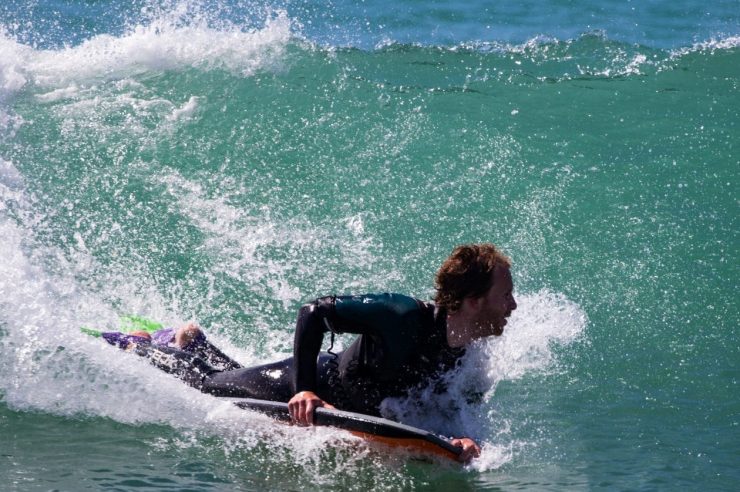

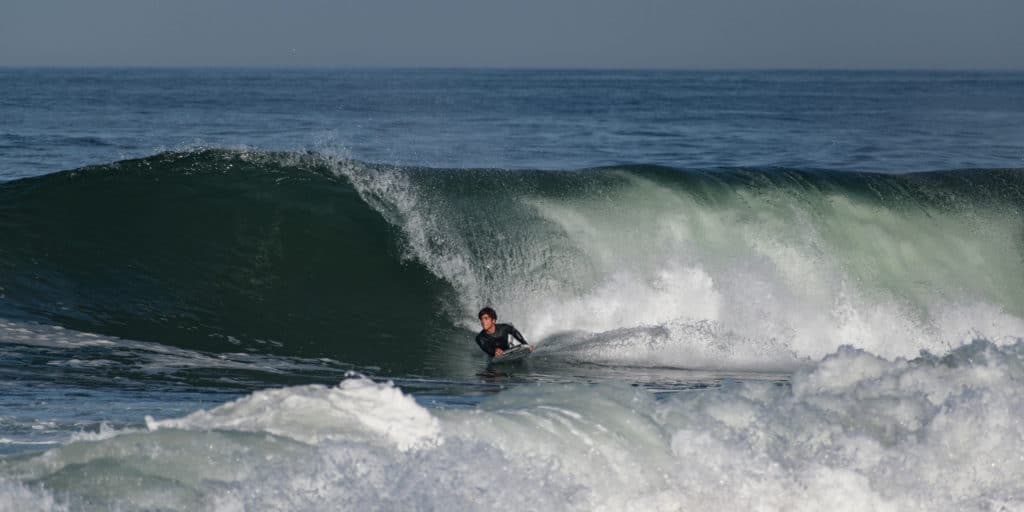
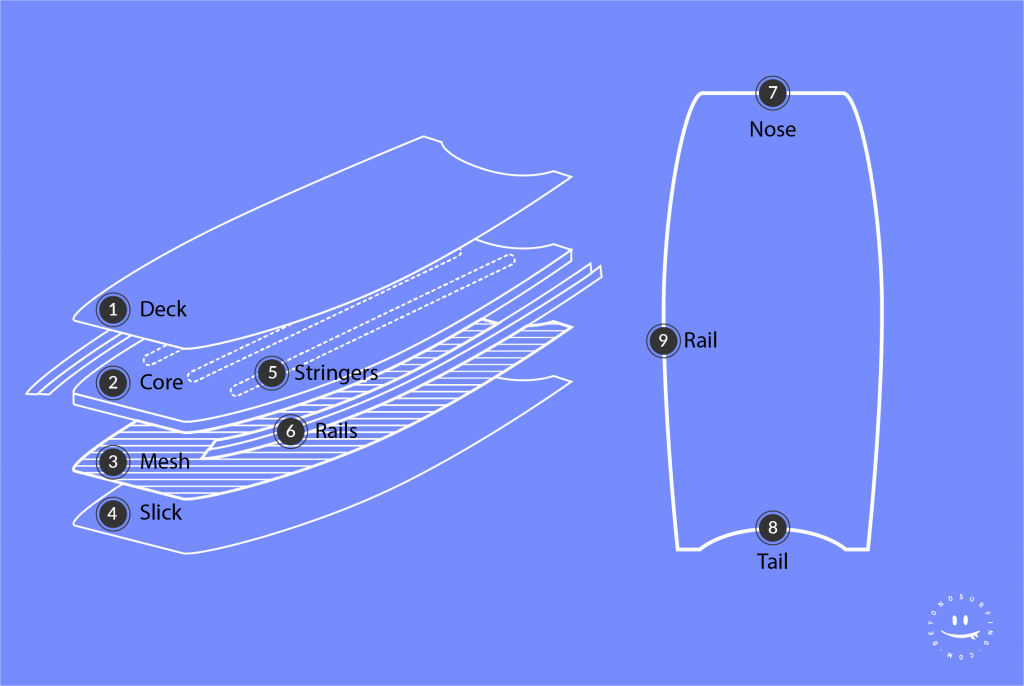
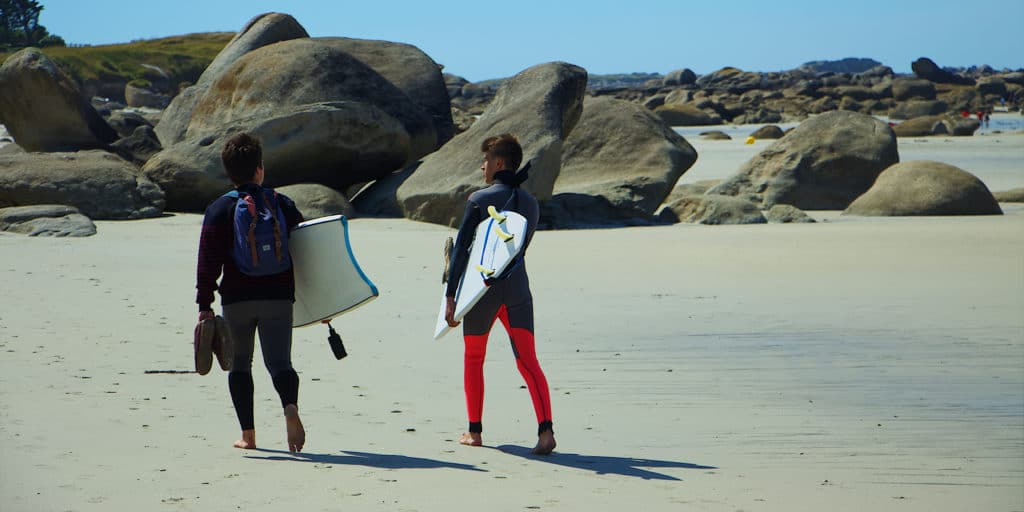
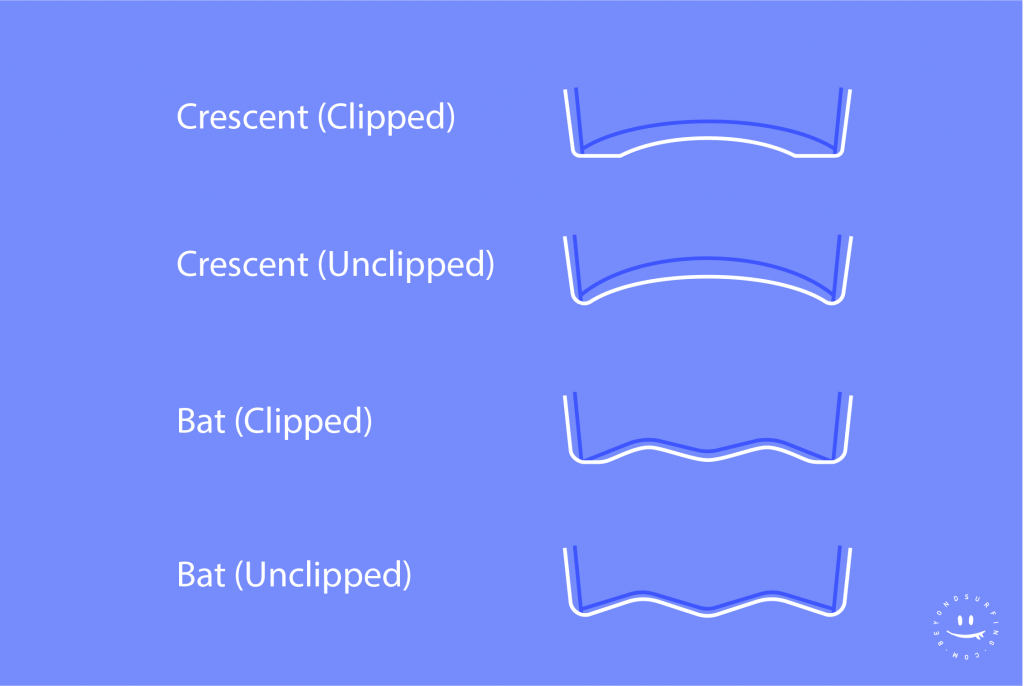

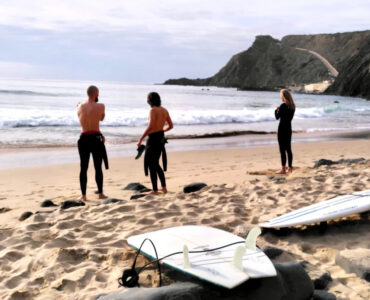
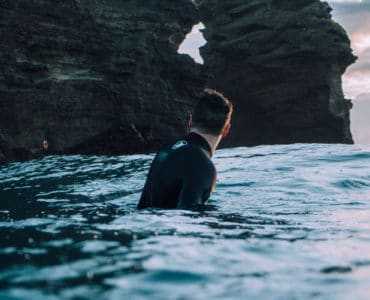
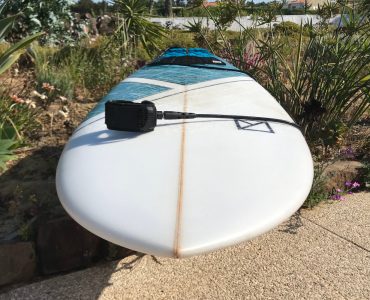
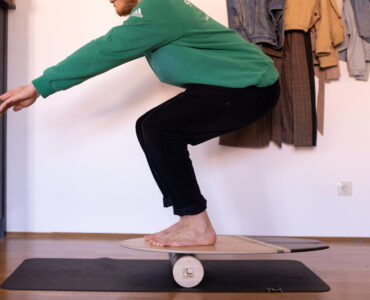








Add comment